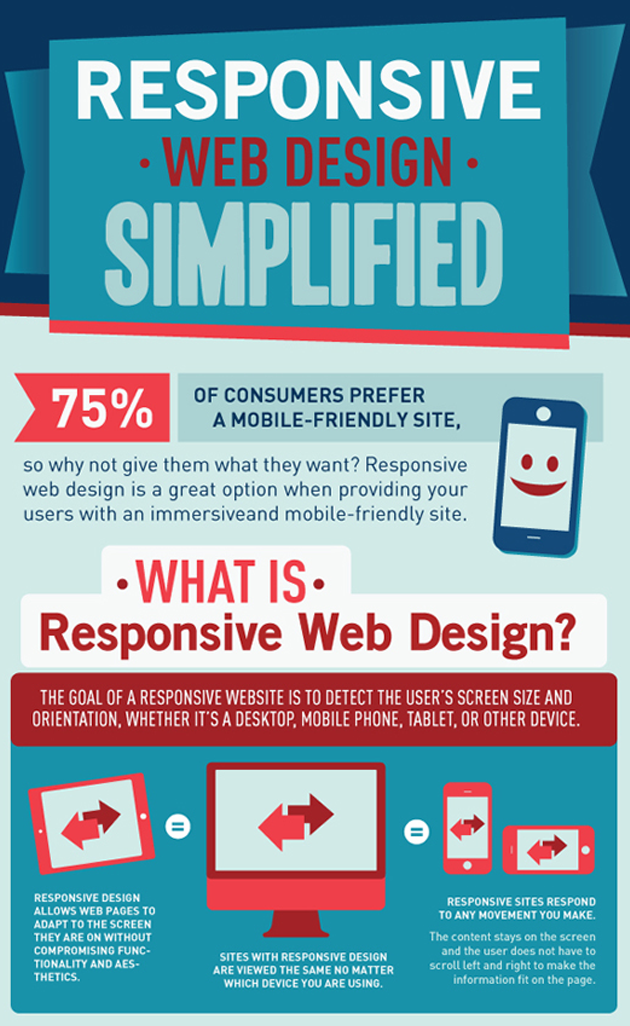The Advancement Of Website Design: Then And Now
The Advancement Of Website Design: Then And Now
Blog Article
Short Article By-Kinney Clarke
In the past, internet sites were easy and concentrated on information. Click In this article was straight, and style was for desktops. Now, customer experience is essential. Data guides styles for very easy navigation. Responsive formats suit different gadgets. Today, dark setting decreases strain, and minimalist menus improve navigating. Interactive attributes involve users, and strong visuals attract attention. AI combination improves involvement. See just how layout has developed to improve your online trip.
Early Days of Web Design
In the early days of website design, simpleness preponderated. Internet sites were fundamental, with restricted colors, font styles, and designs. The emphasis got on offering info instead of showy visuals. Users accessed the internet through sluggish dial-up connections, so rate and functionality were essential.
Navigation menus were straightforward, typically located on top or side of the web page. Internet sites were developed for desktop, as mobile browsing wasn't yet common. Content was king, and designers focused on simple readability over complex style components.
HTML was the primary coding language used, and developers had to work within its restrictions. Animations and interactive attributes were marginal compared to today's standards. Websites were fixed, with little dynamic content or customized user experiences.
Rise of User-Focused Layout
With the advancement of web site style, a shift in the direction of user-focused layout principles has actually come to be increasingly prominent. Today, producing sites that prioritize individual experience is essential for engaging visitors and accomplishing service objectives. User-focused design entails recognizing the requirements, preferences, and habits of your target audience to customize the site's design, content, and includes as necessary.
Developers currently carry out complete research, such as user surveys and functionality testing, to collect insights and comments straight from individuals. This data-driven approach aids in producing user-friendly navigation, clear calls-to-action, and visually enticing user interfaces that reverberate with visitors. By positioning the customer at the facility of the style process, websites can supply a much more individualized and satisfying experience.
Receptive layout has additionally become an essential aspect of user-focused style, making certain that web sites are optimized for various gadgets and screen dimensions. This flexibility improves access and use, satisfying the diverse means users connect with websites today. Fundamentally, the rise of user-focused layout represents a shift towards producing digital experiences that prioritize the requirements and expectations of the end individual.
Modern Trends in Web Design
Check out the latest patterns forming website design today. One famous pattern is dark setting style, supplying a smooth and contemporary appearance while decreasing eye strain in low-light environments. One more key fad is minimal navigating, simplifying menus and improving customer experience by focusing on essential elements. Incorporating micro-interactions, such as computer animated switches or scrolling results, can produce a more engaging and interactive website. Receptive design stays vital, making sure seamless individual experiences throughout different devices. Furthermore, making use of vibrant typography and unbalanced layouts can add visual rate of interest and accentuate specific material.
Integrating AI technology, like chatbots for client support or customized recommendations, improves user involvement and simplifies processes. Access has also become a substantial fad, with designers focusing on comprehensive design methods to cater to varied user demands. Accepting sustainability by maximizing website efficiency for rate and performance is an additional arising trend in web design. Working together with individual comments and information analytics to iterate and boost design continuously is vital for staying relevant in the ever-evolving electronic landscape. By accepting these modern patterns, you can create a visually attractive, straightforward site that reverberates with your audience.
Conclusion
As you assess the development of website design from the very early days to currently, you can see exactly how user-focused layout has actually come to be the driving pressure behind modern trends.
Accept click the up coming web page of change and adaptation in website design, always maintaining the individual experience at the center.
Keep existing with the most recent patterns and modern technologies, and never ever quit advancing your approach to create aesthetically spectacular and easy to use web sites.
Evolve, adjust, and produce - the future of web design remains in your hands.
